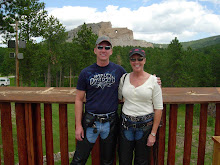The article discussed the "eclipse of generalship" in modern rule sets.
Normally this type of thing doesn't bother me, but when its thinly veiled criticism of mechanisms not used in an author's own set, it does bother me. Rather than implying, or outright stating that other mechanisms are bad - let's hear why YOUR set(s) don't suck. I mean really - man up and own it.
Some of the discussions:
"Wargames Must Have Accurate and Credible Command & Control"
Huh? By whose definition? What is "accurate and credible"? Apparently PIP systems, rolling for actions, or any card system fails to meet the author's criteria. Blch.
Next: "Wargames Must Have Accurate and Credible Combat Mechanisms".
HUH??? That is the STUPIDEST thing I've ever read. Accurate and Credible? By whose definition? Evidently, only his. Not that he would have let us know what is accurate and credible - just listing those that aren't. Any thought that a game PROCEDURE/MECHANISM has to be accurate and credible is absolutely ridiculous. Maybe we're supposed to smack each other....as soon as your opponent calls "uncle" you've won the melee. What drivel.
Finally: "Wargames Must Have Accurate and Credible Terrain".
What can I say after the other two categories. All wargames terrain is an abstraction, and its effect in the game is entirely dependent on that particular game's mechanisms.
I guess the overall point of the author was that modern sets are directed too much toward speed of play and having fun. HUH??? Oh, I see - I think the hobby would be much better suited to slower playing games that aren't fun. That would be much more Accurate and Credible.
Sometimes this hobby just ticks me off.
"Huh? What is this "Accurate and Credible" garbage that you speak of? SQUIRREL!!!!"
My bike is "Accurate and Credible"
I wonder if the wargame's police think this is "Accurate and Credible"?
I think a better measurement standard from this author would instead have been:
"Credible Realistic Accurate Procedures".
I'll leave you to figure out the acronym.
